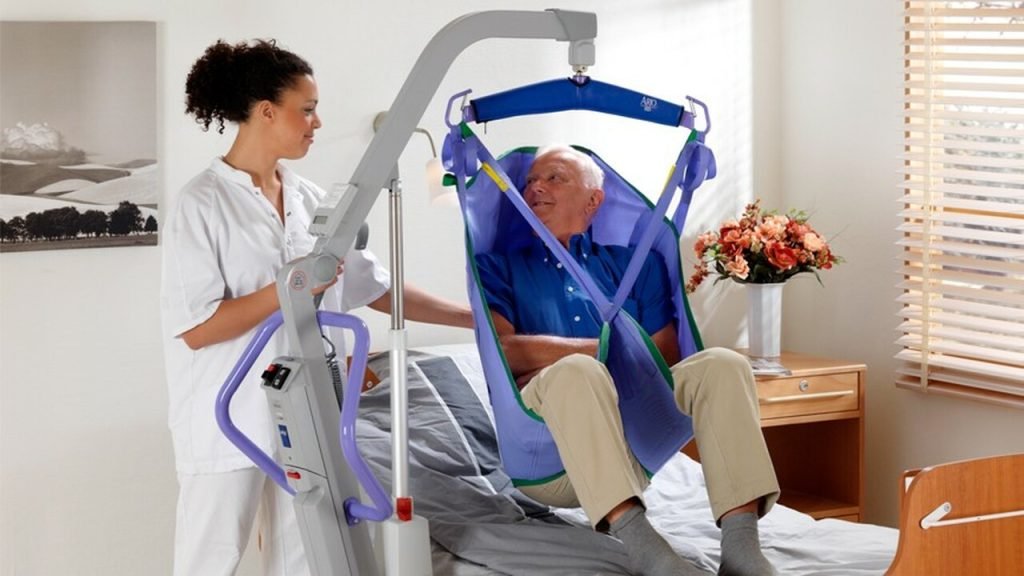1. Introduction
Introduction to the topic and its importance.
Briefly explain what Transfer Slings and Patient Lifts are, and their importance in patient care.
Applicable in hospitals, nursing homes, and home care settings.
2. Basics of Transfer Sling
What is a Transfer Sling?
Definition: A safety fabric or sling device specifically designed for patient transfer.
Common materials: breathable mesh, nylon fabric, cotton materials, etc.
Main Uses:
- Helps caregivers transfer bedridden patients easily and safely.
- Reduces patient discomfort and pain during movement.
Types of Transfer Slings
- Universal Sling: Suitable for most patients, used for daily care.
- Bath Sling: Waterproof design, suitable for bathing and hygiene care.
- Support Sling: Provides extra support, suitable for patients with weak muscles.
- Standing Sling: Helps patients stand, suitable for rehabilitation training.
3. Basics of Patient Lift
What is a Patient Lift?
Definition: A mechanical device used to lift and transfer patients, typically used with Transfer Slings.
Main functions:
- Reduces the physical burden on caregivers.
- Improves patient safety and comfort during the transfer process.
Types of Patient Lifts
- Manual Patient Lift: Operated via hydraulic or manual pump, suitable for users with a limited budget.
- Electric Patient Lift: Operated using batteries or power supply, convenient and efficient.
- Mobile Patient Lift: Equipped with wheels, suitable for moving between rooms.
- Fixed Patient Lift: Installed on the ceiling or walls, suitable for use in fixed locations.
4. How Transfer Sling and Patient Lift Work Together
Collaboration Mechanism
The Transfer Sling acts as a support tool to wrap and support the patient’s body.
The Patient Lift provides the lifting force to transfer the patient safely from the bed to a wheelchair, chair, or bathtub.
Steps for Use:
- Place the Transfer Sling under the patient’s body.
- Attach the sling to the hooks or support arms of the Patient Lift.
- Operate the Patient Lift, slowly lifting the patient and transferring them to the target location.
- Unhook the sling and complete the transfer process.
Advantages
- Safety: Reduces the risk of patient falls or injuries.
- Efficiency: Helps caregivers complete transfers quickly, saving time and energy.
- Comfort: Reduces pain and discomfort for the patient during the transfer process.
5. Safety Tips for Using Transfer Slings and Patient Lifts
- Check Equipment Condition: Inspect the sling and lift for any damage or wear before use.
- Select the Right Sling for the Patient: Choose the appropriate type of sling based on the patient’s weight, physical condition, and transfer needs.
- Training and Guidance: Ensure caregivers are properly trained to avoid misuse of the equipment.
6. Maintenance and Care of Transfer Slings and Patient Lifts
Regular Inspections and Cleaning
Regularly inspect all parts of the sling and lift to ensure they are not worn or damaged.
When cleaning slings, follow the manufacturer’s care instructions and avoid using bleach.
Storage Recommendations
Store equipment in a dry, well-ventilated place to prevent moisture damage.
7. Conclusion
Summarize the importance of Transfer Slings and Patient Lifts.
Highlight their role in improving caregiving efficiency and safety.
Encourage users to learn more about the proper use of these devices to enhance care quality.

